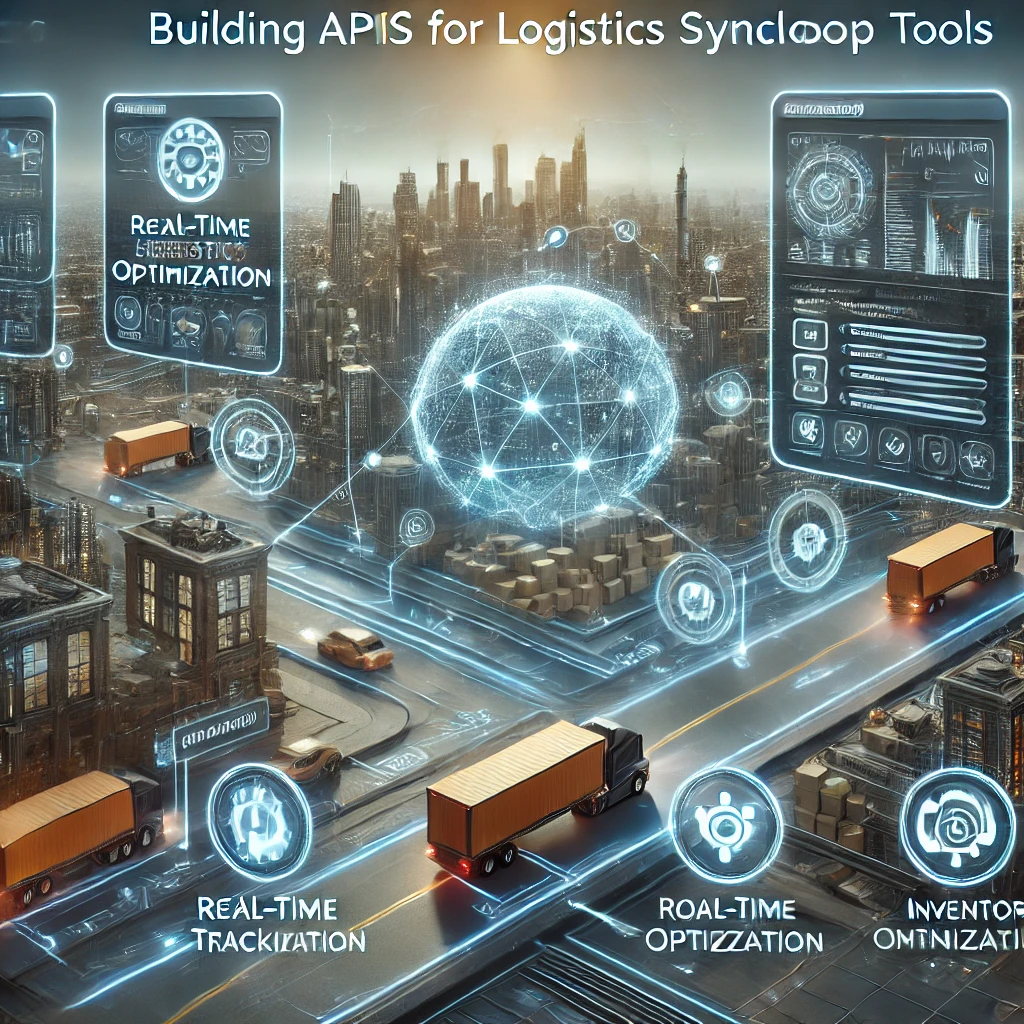Building APIs for Logistics Optimization with Syncloop Tools

Importance of APIs in Logistics Optimization
APIs drive logistics optimization by:
- Enabling Real-Time Tracking: Provide up-to-the-minute location and status updates.
- Streamlining Operations: Automate tasks like scheduling, routing, and inventory checks.
- Improving Decision-Making: Deliver actionable insights through data aggregation and analysis.
- Enhancing Integration: Connect diverse systems such as warehouse management, fleet tracking, and customer portals.
Syncloop’s platform empowers developers to create APIs that address these requirements seamlessly.
Key Features of Syncloop for Logistics APIs
1. Dynamic Workflow Automation
Automate logistics processes such as shipment scheduling, route planning, and notification triggers.
2. Real-Time Data Processing
Enable instant updates and decision-making with Syncloop’s low-latency infrastructure.
3. Data Transformation
Use Transformers to standardize and integrate data from various sources for analytics and operations.
4. Scalable Infrastructure
Handle high API traffic during peak logistics operations without compromising performance.
5. Monitoring and Analytics
Track API performance, request patterns, and error rates in real time to ensure seamless operations.
6. Secure Communication
Protect sensitive logistics data with encryption, token-based authentication, and role-based access.
Steps to Build Logistics APIs with Syncloop
Step 1: Define Core Logistics Requirements
Identify the primary functionalities your logistics API needs, such as:
- Vehicle and shipment tracking.
- Route optimization.
- Inventory and warehouse management.
- Real-time notifications and updates.
Step 2: Configure API Endpoints
Set up endpoints in Syncloop for each logistics function, such as:
- /track for real-time shipment tracking.
- /route/optimize for route planning.
- /inventory/update for warehouse stock adjustments.
Step 3: Automate Workflows
- Use Syncloop’s workflow automation tools to:
- Schedule shipments based on inventory levels and delivery timelines.
- Optimize delivery routes dynamically based on traffic and weather conditions.
- Trigger notifications for shipment updates or delays.
- Incorporate conditional logic to handle exceptions, such as rerouting during disruptions.
Step 4: Integrate Data Sources
- Use Transformers to aggregate data from:
- GPS tracking systems.
- ERP and WMS platforms.
- Weather and traffic APIs.
- Standardize data formats for consistency and seamless processing.
Step 5: Enable Real-Time Monitoring
- Leverage Syncloop’s real-time monitoring dashboard to:
- Track API usage and performance.
- Identify bottlenecks and resolve issues quickly.
- Use insights from monitoring tools to optimize workflows and improve response times.
Step 6: Secure API Operations
- Implement token-based authentication to validate API requests.
- Encrypt all data transmissions to protect sensitive logistics information.
- Use role-based access to limit API operations based on user roles, such as administrators, drivers, or customers.
Real-World Applications
1. Fleet Management
- Use Case: Track and manage vehicle fleets for real-time location updates, fuel usage, and maintenance alerts.
- Features Used: Real-time monitoring, workflow automation, data transformation.
2. E-Commerce Logistics
- Use Case: Enable real-time tracking for customers, optimize delivery routes, and manage inventory across warehouses.
- Features Used: Dynamic workflows, scalable APIs, secure communication.
3. Warehousing
- Use Case: Integrate inventory data across multiple warehouses to streamline order fulfillment and reduce stockouts.
- Features Used: Data transformation, API monitoring, role-based access.
4. Cold Chain Management
- Use Case: Monitor temperature-sensitive shipments to ensure compliance with quality standards.
- Features Used: Event-driven workflows, real-time data processing, secure APIs.
Best Practices for Logistics APIs
- Optimize for Real-Time Use: Design APIs to support instant updates for tracking and decision-making.
- Monitor Continuously: Use real-time monitoring to detect and resolve issues before they impact operations.
- Secure Data Transfers: Protect sensitive logistics data with encryption and robust authentication mechanisms.
- Leverage Automation: Automate repetitive tasks like route planning and notifications to save time and reduce errors.
- Document APIs: Provide clear and detailed documentation to facilitate integration and usage by stakeholders.
Why Choose Syncloop for Logistics APIs?
Syncloop offers a comprehensive platform for building and managing APIs tailored to logistics optimization. Its automation, scalability, and monitoring capabilities simplify the complexities of logistics API development, enabling developers to deliver reliable and efficient solutions.
Conclusion
APIs are the backbone of modern logistics systems, enabling real-time tracking, efficient operations, and seamless integration. Syncloop provides the tools and infrastructure needed to design and manage APIs that optimize logistics workflows. By leveraging Syncloop’s features, developers can build scalable, secure, and user-centric logistics platforms that drive success in a competitive market.
Back to Blogs